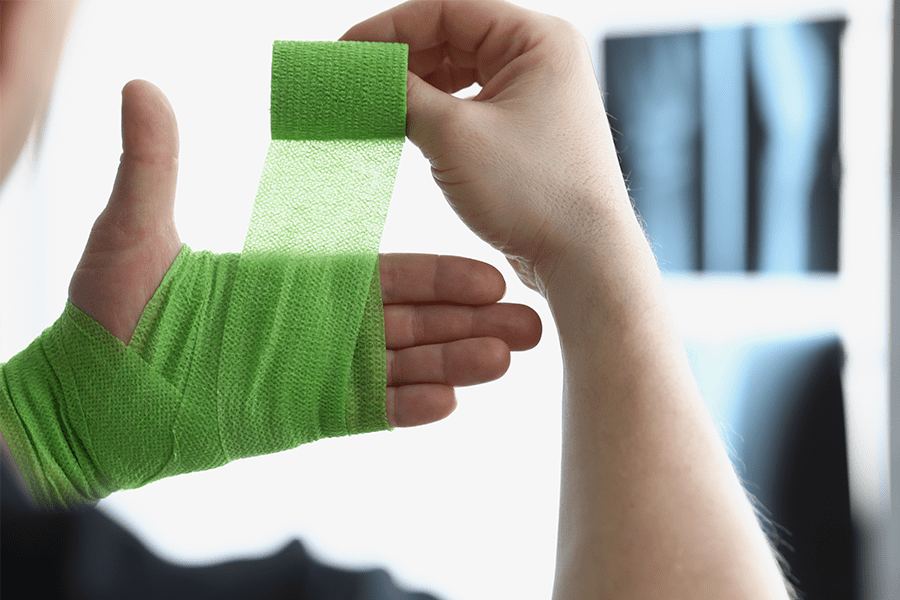 What is a wound?
What is a wound?- How do small wounds heal?
- What are the three stages of wound healing in order?
- Is there a fourth stage of wound healing?
- How do doctors treat complex wounds?
When it’s working properly, your body is a finely tuned biological machine. When the skin and underlying tissue are injured, the biologic process of healing itself can be helped along by doctors. However, there are three (and some would argue four) precise steps that occur in the body before healing actually takes place.
If you’ve been injured, it might help you to understand the three stages of wound healing that always take place in order, before you can regain your health. Here’s what you need to know.
What Is a Wound?
A wound, technically speaking, is a break, cut, or opening in the skin. You may not realize it, but the skin is an organ of the body. It’s actually the largest organ, bigger than your heart, liver, or brain.
The purpose of your skin is to serve as an outer coating of sorts for all the life within you. It encases your body but also protects your organs from infection. When you have a break in your skin, this protection is interrupted.
The skin is made up of three layers. This includes the:
- Epidermis, which is the top layer of skin that we see
- Dermis, which are the elastic fibers below the epidermis that hold the sweat glands, blood vessels, and nerves
- Subcutis, which is the layer of fat lying just below the dermis
Each layer can be impacted by a skin wound. The body’s response will be to try to immediately heal itself. This is a process that can continue for days, weeks, or years, depending on the severity of the wound, your ability to heal, and the treatment you receive.
There are five types of skin wounds unrelated to a surgical procedure:
- Burns
- Cuts
- Punctures
- Scrapes
- Sores
Wounds can be symmetrical, smooth, or jagged and rough. A wound can be surface layered, affecting only the epidermis. Deeper wounds can impact the underlying structures in the body such as your:
- Blood vessels
- Bones
- Ligaments
- Muscles
- Tendons
If your immune system is working properly, the most minor wounds may heal on their own. However, all wounds need care to heal properly. Below the surface of what you see as an external wound, there is a complex process underlying how tissues heal.
How Do Small Wounds Heal?
 Any time the surface of the skin is breached your immune system goes to work. The immune system of your body is incredible. It works hard to heal itself, whether the wound is a paper cut or something much more severe.
Any time the surface of the skin is breached your immune system goes to work. The immune system of your body is incredible. It works hard to heal itself, whether the wound is a paper cut or something much more severe.
Even a small cut signals to the immune system that it’s time for your healing cells to go to work. If the wound is bleeding, a type of blood cell called a platelet rushes to the site to try to clot the blood and stop it from leaving the body. Then there are chemicals called cytokines released to attract healing white blood cells, called neutrophils and macrophages, to the wound site.
You may notice that the wound will redden and inflame. At the microscopic level, there is a battle going on. Immune cells are fighting whatever germs entered via the wound. Basically, the white blood cells try to eat whatever types of germs try to infiltrate the body.
However, not all wounds can heal on their own, and require long-term care. If the wound is large, there are three primary stages of wound healing that must occur.
What Are the Three Stages of Wound Healing in Order?
There are three primary stages of wound healing that must occur for you to return to health:
- Inflammatory phase
- Proliferative phase
- Remodeling phase
The inflammatory phase of wound healing begins from the moment the injury occurs and lasts up to four days. This process has platelets trying to clot the wound and the constriction of the underlying blood vessels to halt any loss of blood. In a healthy immune system, white blood cells rush to the wound site to try to kill the invading germs flooding your skin from the break or tear.
The proliferative phase of wound healing overlaps the inflammatory phase and begins about three days after the injury happens. During this phase, the body produces cells called fibroblasts to help produce more collagen and heal the skin break. Under the skin’s surface, new blood vessels are trying to form to help repair the tissue.
The remodeling phase is a longer-term process that can extend six months to a year after a severe injury. Some doctors call this the maturation phase of wound healing. The remodeling phase usually encompasses large wounds that often require extensive care by a physician to help the immune system heal itself. During this time, skin collagen increases and the tissue begins to contract and rebuild itself. Collagen may increase to the point where scar tissue forms.
Every person’s healing journey is different, depending on the wound’s severity and how healthy the immune system is. If you have a chronic condition such as diabetes or vascular disorders, you may experience a slower healing process or even wounds that stubbornly will not heal. Doctors can help with a variety of treatments during this time.
Is There a Fourth Stage of Wound Healing?
You may find reference to a fourth stage of wound healing called the hemostasis phase. This occurs just before the inflammatory phase of healing but only in some cases, when blood leaks out of the body.
During hemostasis, the blood vessels constrict to try to stop blood flow. Then platelets begin clumping together in an attempt to clot the wound. Finally, blood coagulation occurs to stop the bleeding. However, this fourth stage only occurs if the wound is actively bleeding.
How Do Doctors Treat Complex Wounds?
 There are many treatment options for complex wounds that will not heal on their own. Chronic wounds are typically cleaned and covered regularly with bandages, but if the skin hasn’t healed over time, special treatments may be necessary. This could include:
There are many treatment options for complex wounds that will not heal on their own. Chronic wounds are typically cleaned and covered regularly with bandages, but if the skin hasn’t healed over time, special treatments may be necessary. This could include:
- Regular cleaning and debridement, or removal of dead skin from the wound
- Moist compresses to speed healing
- Compression bandages to help blood circulations
- Antibiotics to kill off bacteria
- Hyperbaric oxygen therapy to increase the flow of oxygen in the blood and speed healing
- Ultrasound and electromagnetic therapy that uses sound waves to speed healing
- Negative wound pressure therapy that sucks fluid from the wound while increasing blood flow and healing to the site
- Skin grafts, which take healthy skin from another part of the body and transplant it at the wound site
- Pain management treatment can help you feel better during complex wound care
Freedom Health & Wellness is devoted to helping patients heal wounds of all kinds and protect their bodies from infection. Our expert team is mobile, well-equipped, and always ready to provide high quality care.

